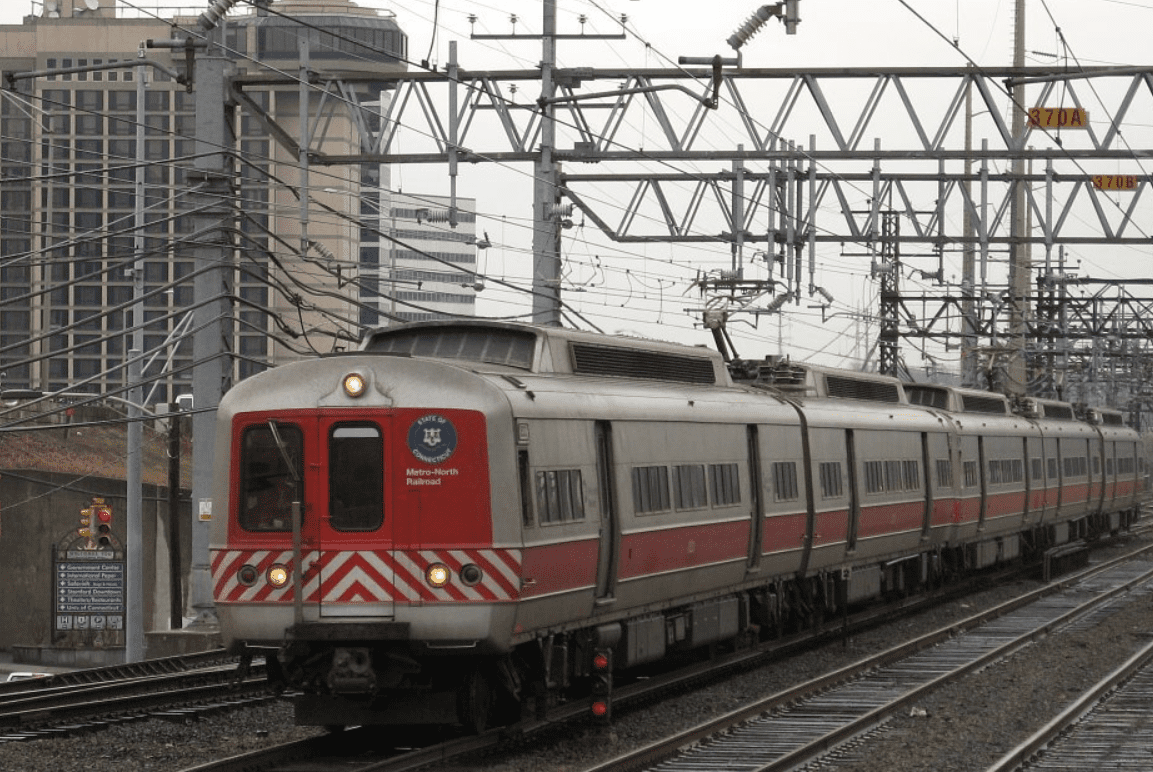A promised new four-stop commuter express service from New Haven to Grand Central will take 10 fewer minutes from end to end than the current local service on the New Haven Line. The service is expected to start next year.
The particulars of funding and scheduling the new service aren’t yet clear, and the cost will depend on how Metro-North fits the additional trains into its schedule, but the Connecticut Department of Transportation plans to run multiple express trains with stops only at New Haven, Bridgeport, Stamford and Grand Central during peak commuting times next year, Public Transportation Bureau Chief Rich Andreski told CT Examiner.
“The Governor supports it, so now it’s just a matter of identifying the best way to fund that, whether it be through state or federal funds,” Andreski said.
The express service would run on added trains, said Andreski, and “a lot” of the local service that is in place will remain. The department expects the new service will be 10 minutes faster than the current 2-hour service between New Haven and Grand Central Terminal, and will be scheduled to minimize transfer times between connecting lines, including Shore Line East.
Gov. Ned Lamont touted the new service last week as a way to provide many commuters with an immediate time savings, as state officials look toward longer-term goals — and an $8 to 10 billion plan to save 15 additional minutes by 2035 — that could be jump-started with federal funding from an expected infrastructure package this year.
Lamont assembled state officials and lawmakers at the Stratford train station to rally behind the plans for the new express service. Also on hand were trade union representatives, who joined to show support for the $8 to 10 billion vision, commissioned from the engineering-consulting firm AECOM.
A long-term plan
Andreski told CT Examiner that shaving 15 minutes off of the New Haven to Manhattan express service is the “best possible” travel time they could accomplish over the next 15 years. The plan would require about $347 million to straighten curves within the existing right-of-way, and $3.85 billion to replace major moveable bridges and ballast-deck bridges to allow higher speeds over them.
“I’ve seen some feedback that this is not visionary enough, but this program that we announced was intended to be delivered quickly,” Andreski said. “High-speed bypasses and new rights of way are a whole different level of analysis that needs to happen. This is really the down payment on a long-range plan.”
That “down payment” would also include about $300 million to improve drainage around Greenwich and Bridgeport, $150 million to add a fourth track at Milford — giving the entire New Haven Line four-track capacity — and $500 million to lengthen station platforms.
Andreski explained that straightening curves within the existing right of way offers most of the opportunities for time saving — a few seconds in some places, and a few minutes in others.
Positive train control still slows trains around curves, Andreski said, but it would allow the trains to approach curves at higher speeds. Some of those curves have additional speed restrictions imposed by the Federal Transit Administration after a train derailment on Metro-North killed four people in 2013. Blumenthal said those restrictions could be lifted “overnight” with positive train control installed. Andreski said Connecticut is working with the federal government to have those lifted.
Lifting the restrictions on three major locations would save “a minute or two,” Andreski said, on top of the other time savings Connecticut is trying to achieve. He said that all of the projects work in concert to achieve time savings, including updates to the signal system which tops out at 80 mph. Even given straighter curves and reinforced bridges, trains wouldn’t be able to run at higher speeds without a new signal system, said Andreski.
“You can’t do one without the other, which is why, if we get substantially less funding, you’re not going to get a partial benefit that will be proportional,” Andreski said. “If you get half the funding, you’re not going to get half the travel time benefit.”
Finding the funds
The need for federal funding to help pay for these investments was underscored by the appearance of Sen. Richard Blumenthal and Congresswoman Rosa DeLauro at the Stratford rally.
Andreski said the state doesn’t plan on shouldering the entire $8 to 10 billion project cost and that Amtrak would also benefit from the improvements, and can be expected to partner with Connecticut, as it did to secure federal funding for the Walk Bridge project in Norwalk.
Some of the projects are already funded – the bond commission approved $300 million for a new fleet of rail cars that can travel as fast as 125 mph, as well as funding for design on improvements between Bridgeport and Stratford – but Andreski said that the state will still need to secure most of the funding in the coming years.
On Monday, Lamont said that he expects Connecticut to bond about $1 billion for the effort, but that the project would hinge on federal money, especially an infrastructure package now being negotiated on Capitol Hill. Andreski said that Connecticut needs about $1.5 to $2 billion in “seed money” to start the design and permitting process before the major work begins in several years.
“How we pay for it is going to depend on the scope of the new federal Surface Transportation Bill, and to what extent there are discretionary grants we can go after,” Andreski said.
DeLauro, who chairs the House Appropriations Committee, said confidently that there would be a bipartisan federal infrastructure bill to fund rail projects, and additional opportunities for funding through the surface transportation bill and budget appropriations.
“There is an understanding of how critically important rail service is, and making sure that Amtrak and Metro-North are doing what we need to do in terms of high speed rail,” DeLauro said.

